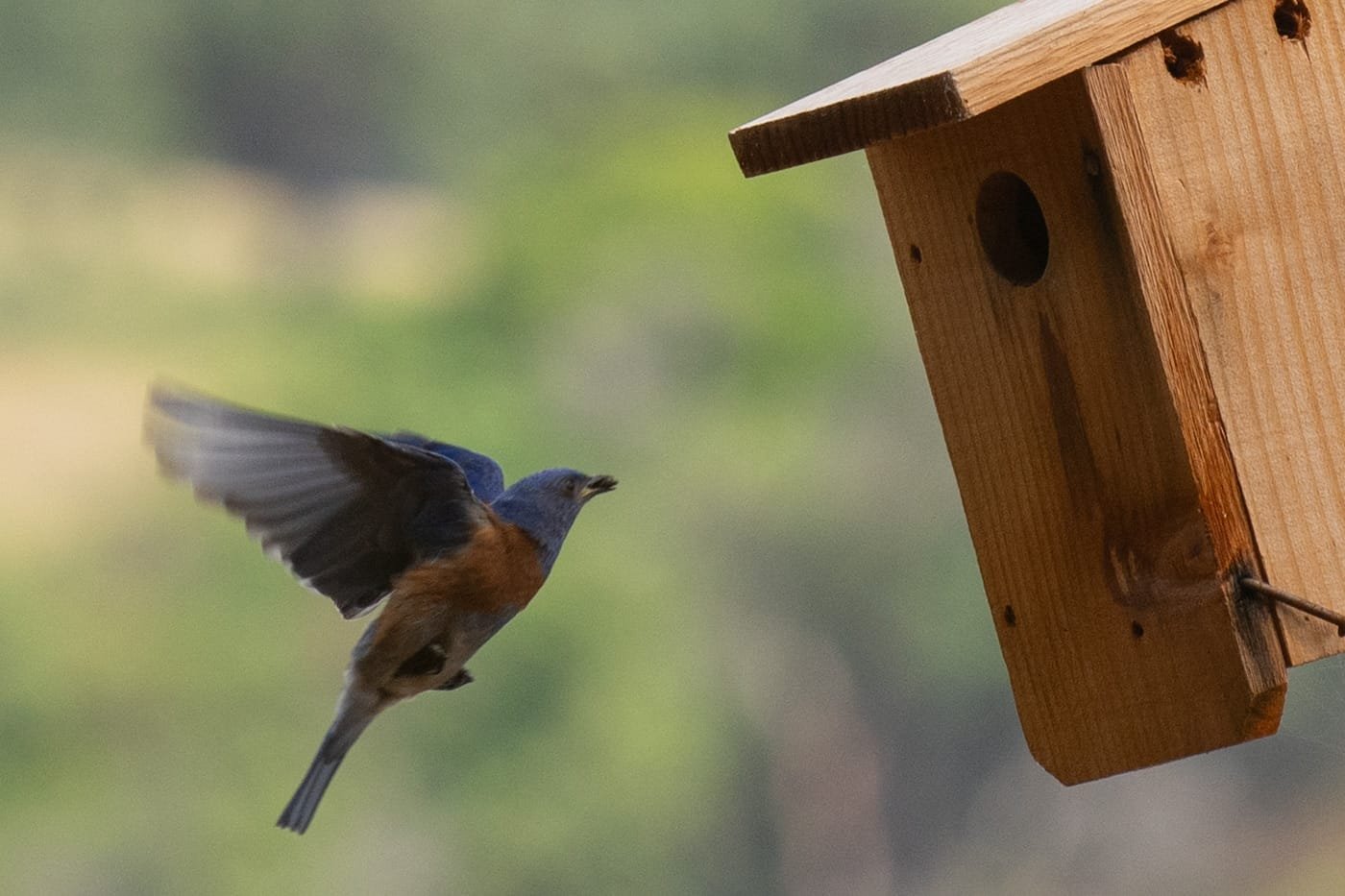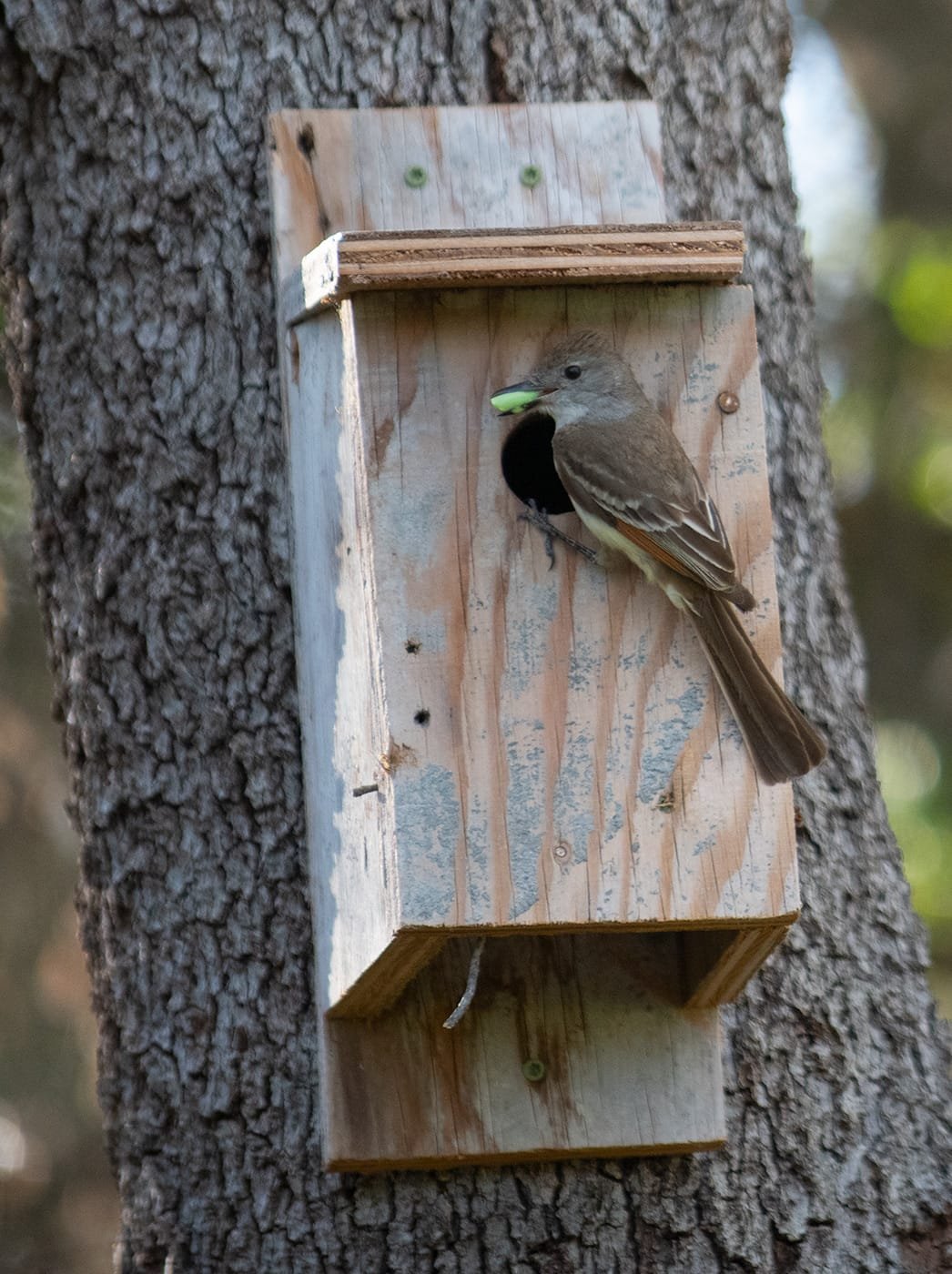Birdhouses in the Vineyards
Bluebird hatchlings at a Frey organic vineyard, Redwood Valley, California.
In the spring of 2020 we placed 33 birdhouses in our vineyards to help bluebirds and other species that are in need of good nesting sites. A total of 102 chicks were raised and fully fledged! The birdhouses were made mostly with recycled wood from the construction of our new winery. The organic vineyards in the spring and early summer provide lots of open space for the breeding pairs to hunt for insects. The reduced number of insects is also good for the grapevines.
Birdhouses made from wood recycled from Frey Vineyards' new winery construction.
The birdhouses hung at the ends of vineyard rows were very popular with Bluebirds and Tree Swallows. The wobbly but secure high metal stakes are good protection against racoons, snakes and other predators.
The depletion of woodlands in the U.S. has made life difficult for many bird species, especially for birds that nest only in tree holes. Native birds also have to compete with larger and more aggressive invasive species for prime nesting sites. For example, the larger non-native European starling will kick out birds from a site to take it over for their own brood. The entrance hole for the birdhouses we made are just wide enough for native species to squeeze through, but too tight for starlings.
We put up the birdhouses in trees next to the vineyards and on metal stakes at the end of vineyard rows. Each birdhouse was inspected weekly. It’s important to monitor the nests and to clean out the straw and detritus after chicks have fully fledged so another breeding pair can move in, even within the same breeding season. We observed 4 birdhouses that were used twice. The birds prefer the boxes to be totally empty, no leftover nesting material inside when scouting for a site. Also, parents often abandon a nest before finishing it, and on occasion even a finished nest with eggs might be abandoned. Each birdhouse had a number written on it and a spreadsheet app was used to help keep track of so many nests!
Each birdhouse has a door for easy monitoring. Bluebirds and Tree Swallows will not abandon the nest following a quick inspection. They will dive-bomb the intruder instead!
Ten of the 33 birdhouses we set up were not used at all by any birds. Maybe these nests didn’t have enough sunlight in the morning, or they were too close to other nests. Several online sources say it’s best to separate birdhouses by 300 or 400 feet, as members of the same species are territorial. But it’s possible two different species will get along fine when nesting next to each other as each might exploit different ecological niches over the same plot of land.
A bluebird enters a birdhouse next to organic vineyards.
For the remaining 23 birdhouses, 102 chicks fully fledged! Four species took advantage of the boxes, mostly bluebirds and tree swallows. In total there were 51 western bluebird chicks, 31 tree swallows, 11 titmice, and 9 ash-throated flycatchers. We hope to add even more birdhouses for next spring!
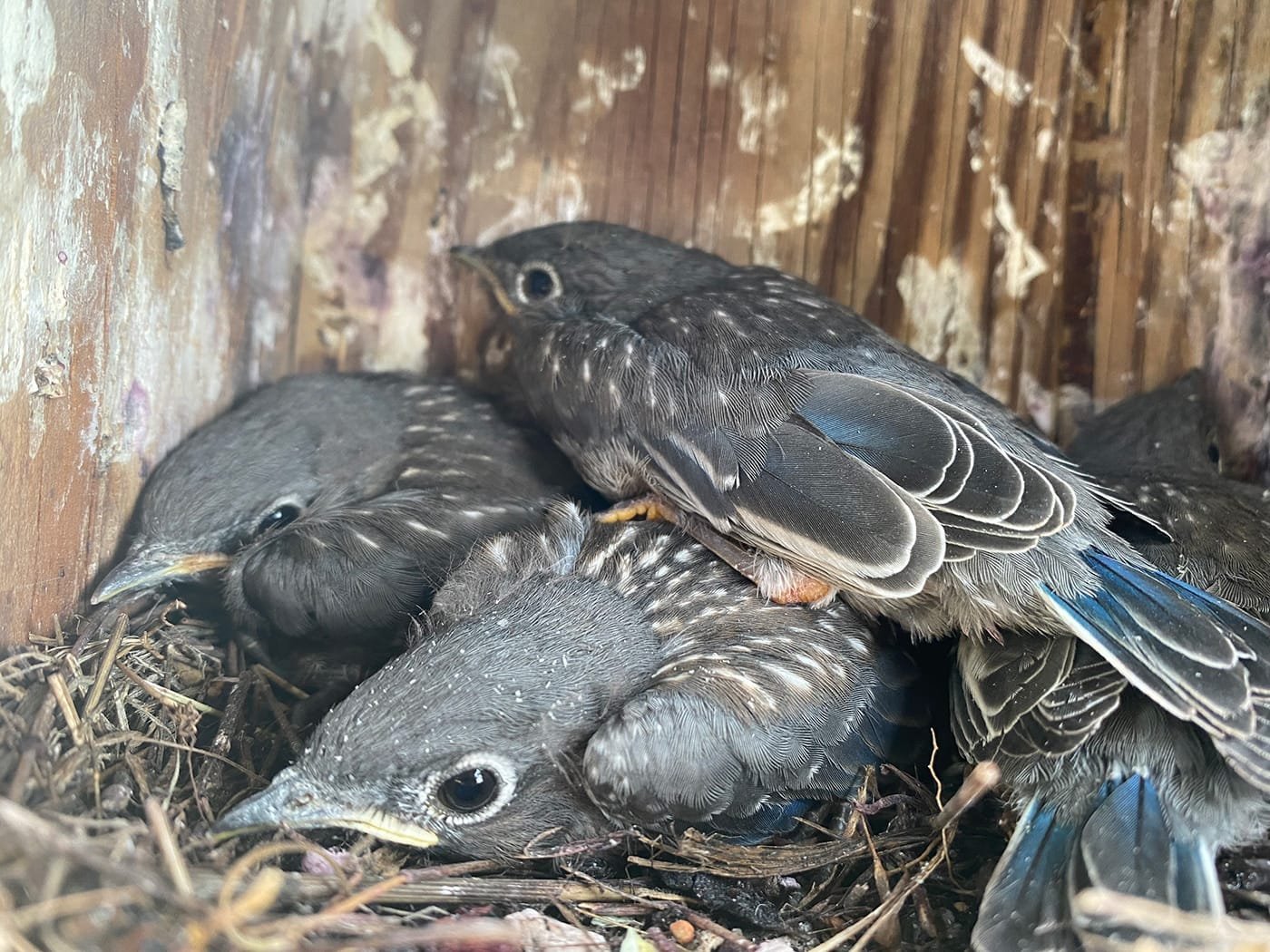
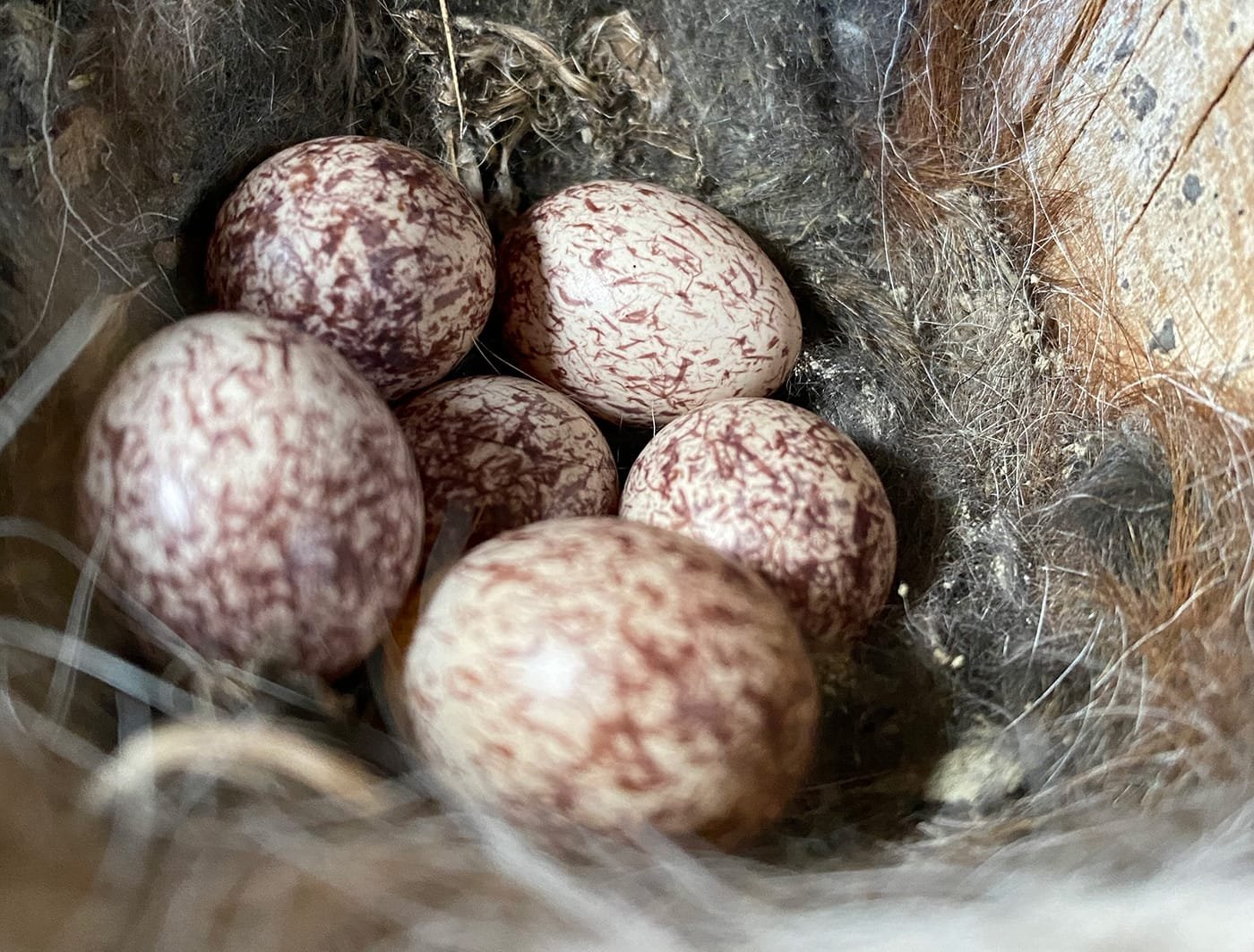
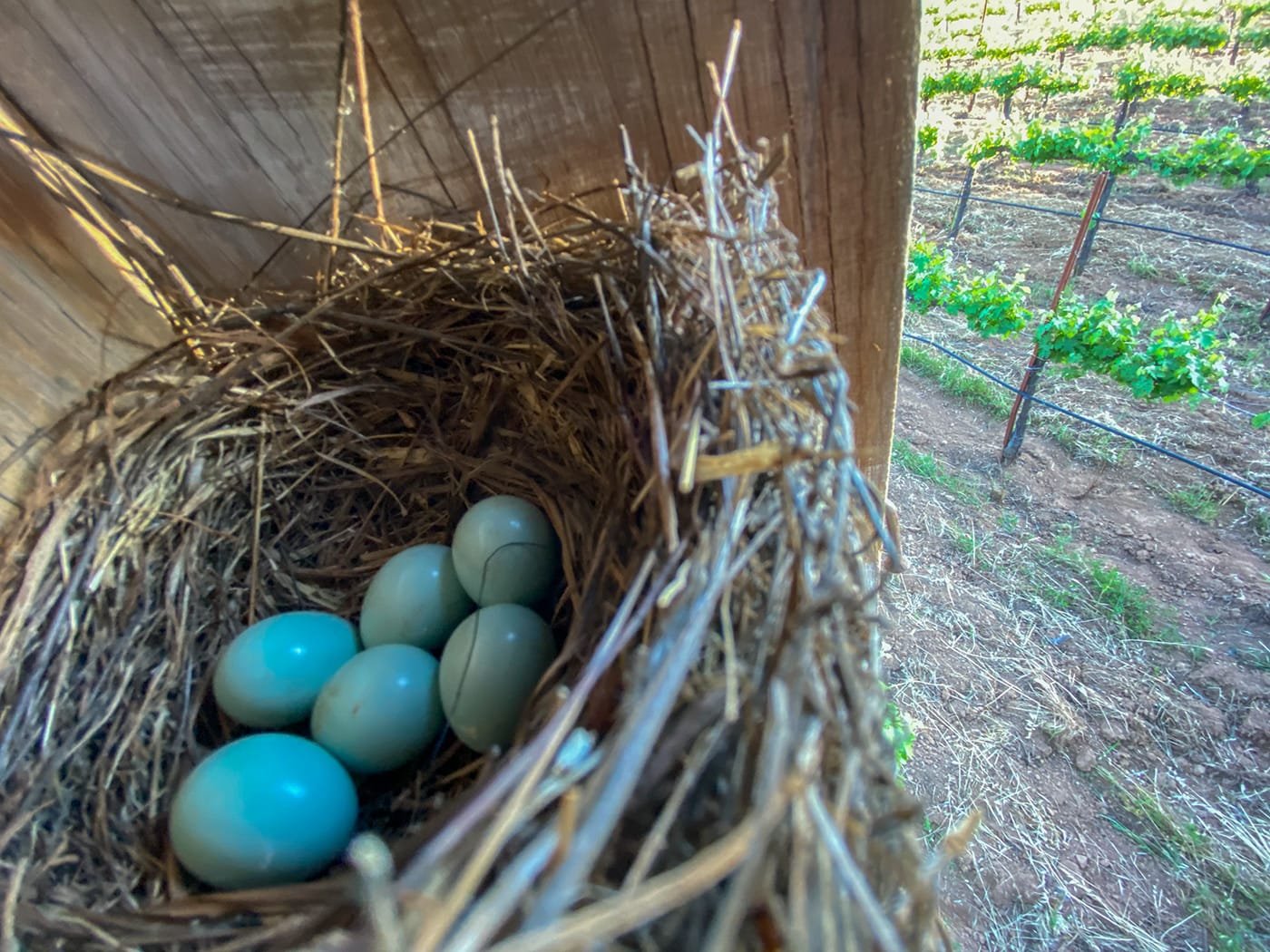
Birdhouses are easy to make and maintain, and we encourage you to make your own to help out your local bird population. A great resource can be found at the Cornell Lab of Ornithology website.






